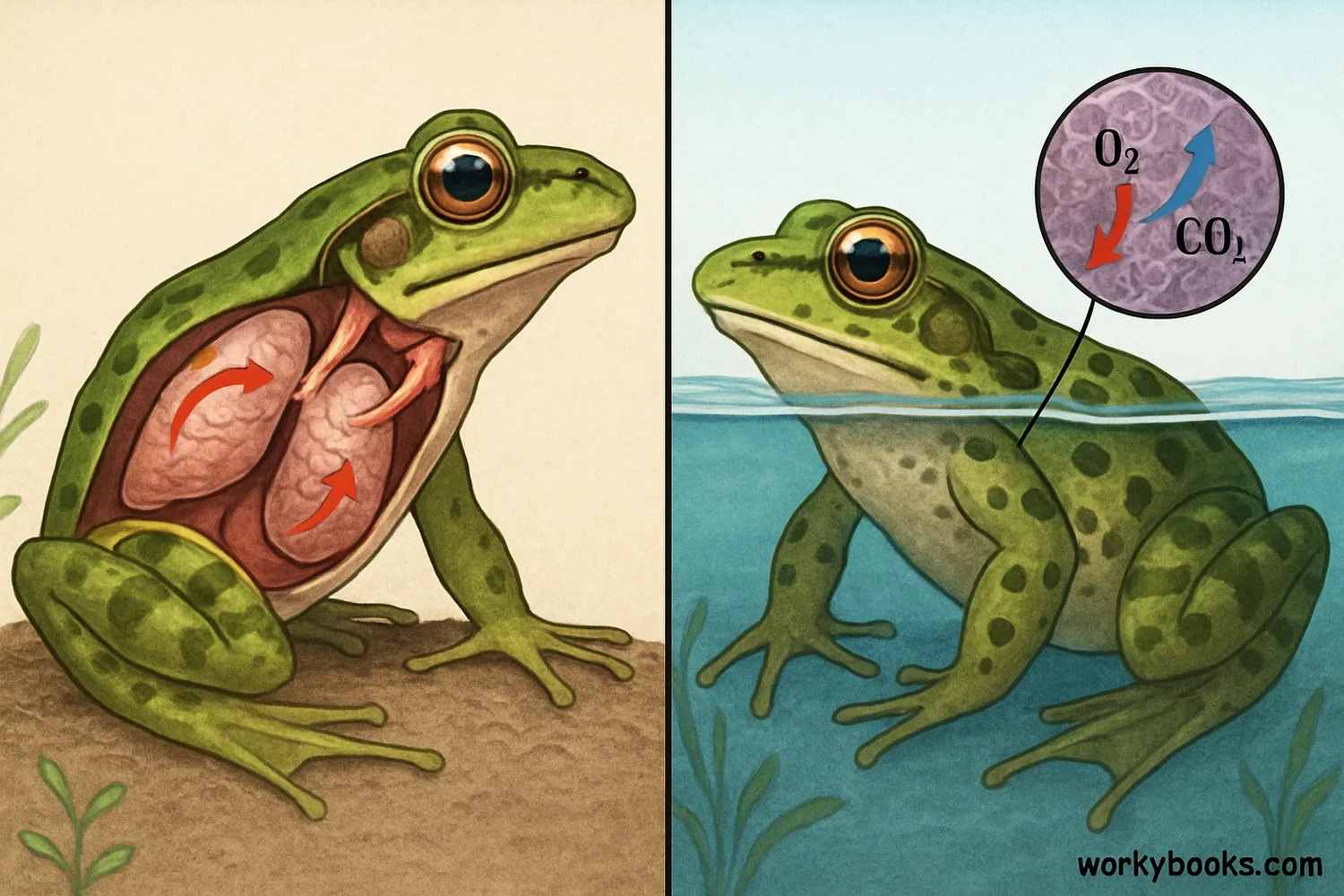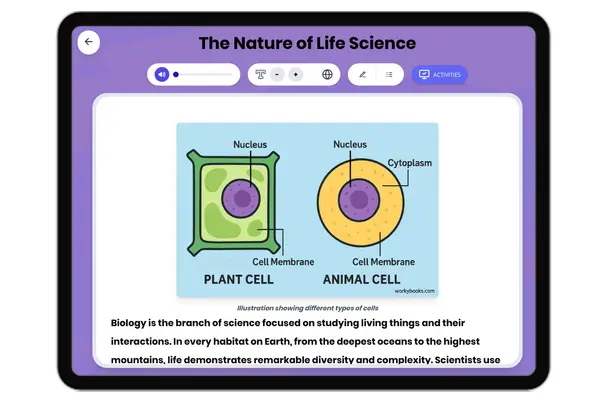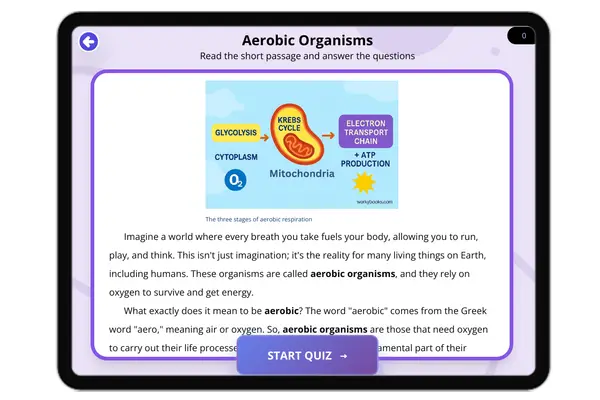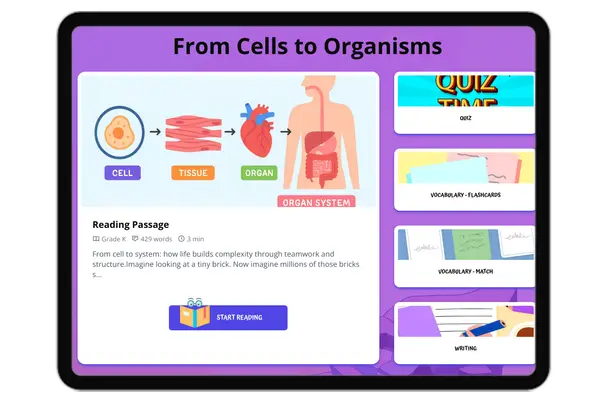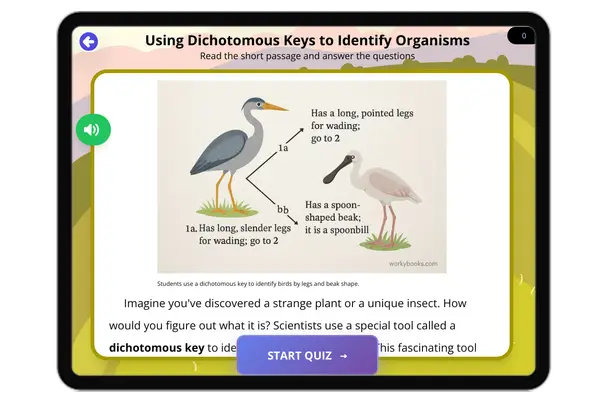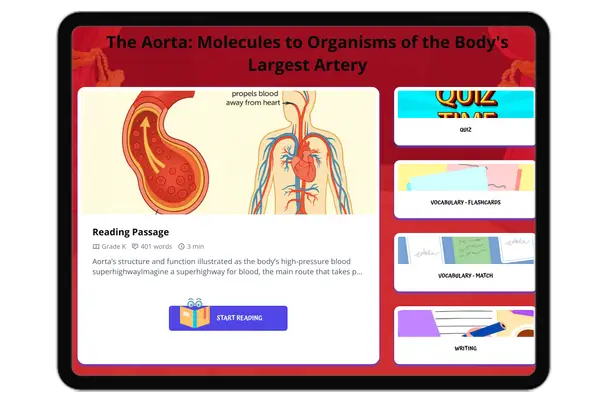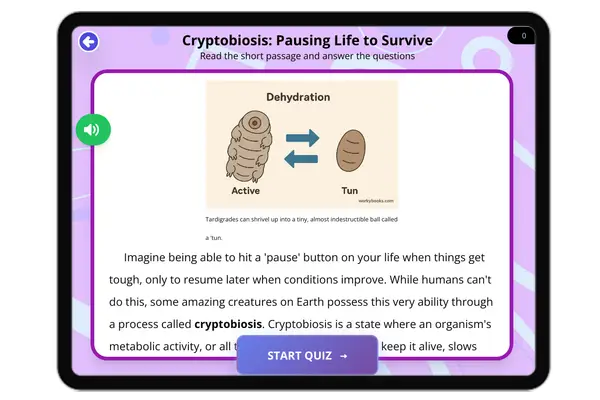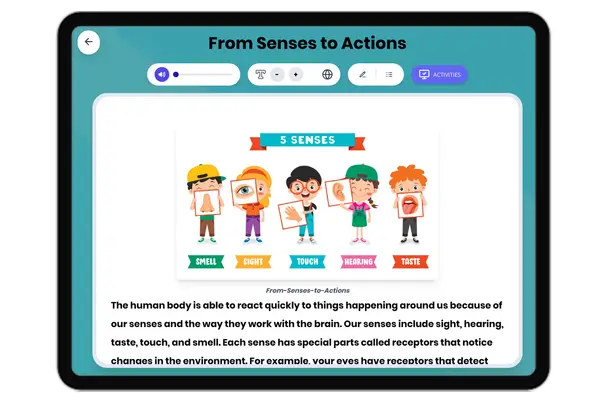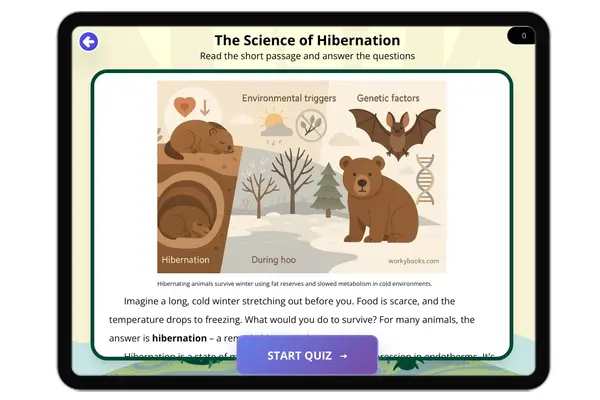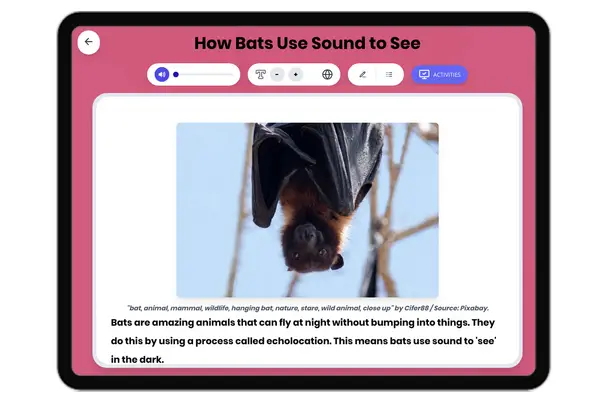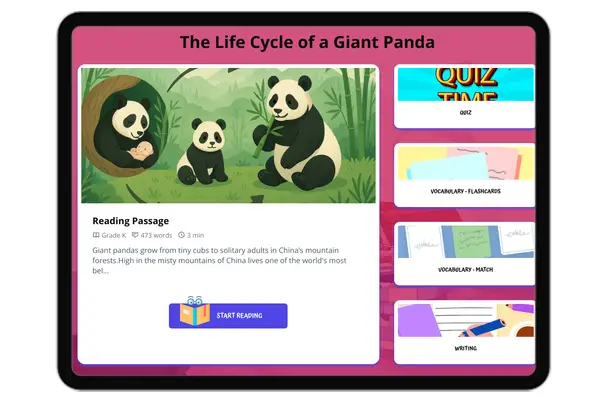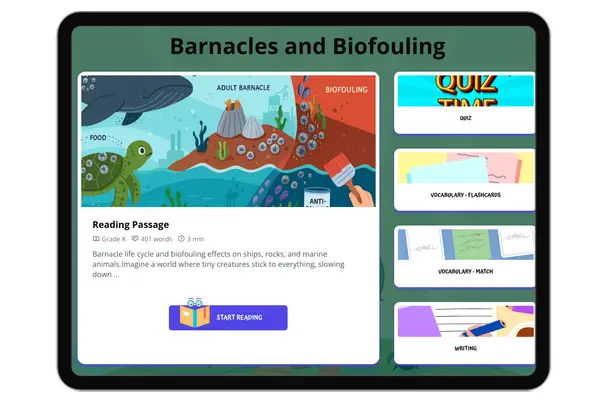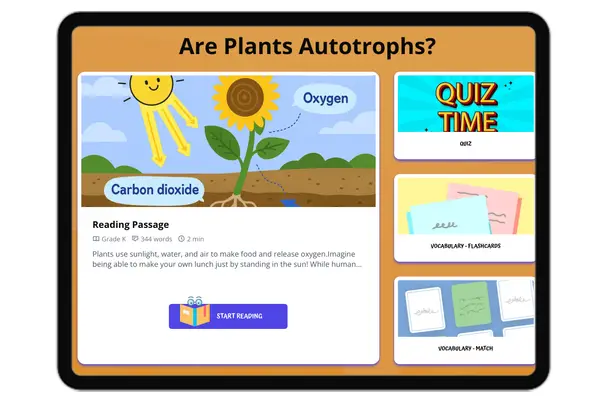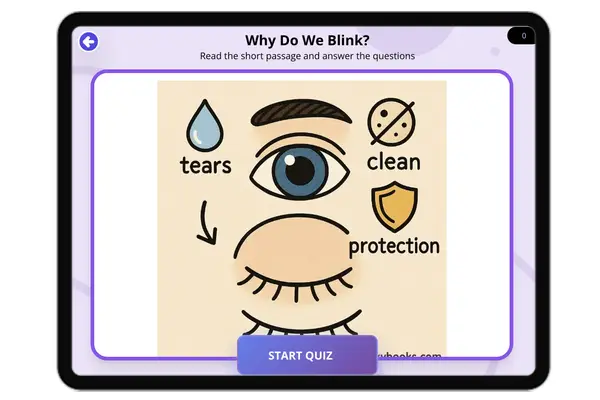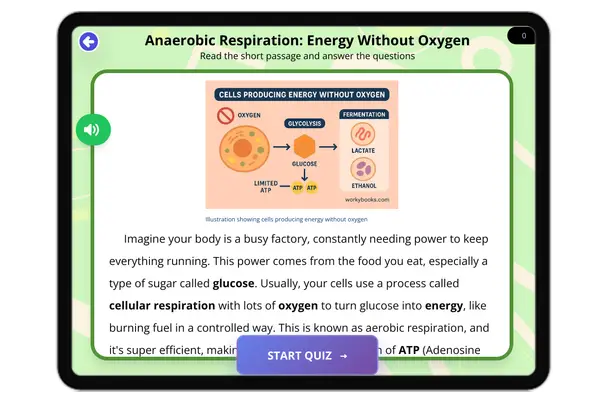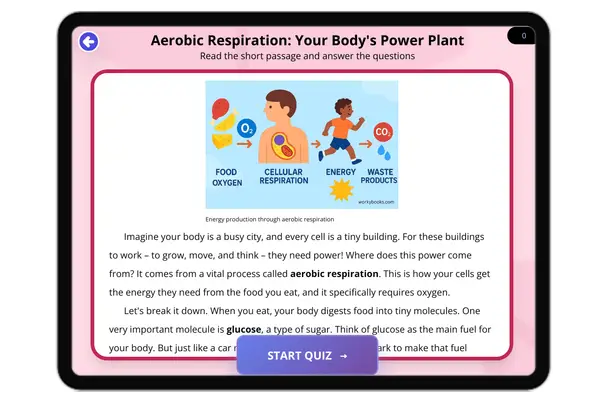How do Amphibians Breathe? — Reading Comprehension
Premium Resource
Grades
- 3
- 4
- 5
- 6
- 7
- 8
PRINT+DIGITAL RESOURCE
This learning resource is available in interactive and printable formats. The interactive worksheet can be played online and assigned to students. The Printable PDF version can be downloaded and printed for completion by hand.
About This Reader
This comprehensive science passage, suitable for middle school students, explores the fascinating topic of amphibian respiration. It delves into the different breathing methods amphibians use throughout their life cycle, from gill-breathing tadpoles to adult frogs and salamanders that utilize lungs and cutaneous respiration. The content aligns with NGSS standards related to life science and organism adaptations, providing a solid foundation for understanding biological systems. Key vocabulary is highlighted, and real-world connections are drawn to make the content engaging and relevant. The passage is designed to support self-study and classroom instruction, offering a clear and factual explanation of this unique biological process.
Perfect For:
👩🏫 Teachers
- • Reading comprehension practice
- • Auto-graded assessments
- • Literacy skill development
👨👩👧👦 Parents
- • Reading practice at home
- • Comprehension improvement
- • Educational reading time
🏠 Homeschoolers
- • Reading curriculum support
- • Independent reading practice
- • Progress monitoring
Reading Features:
📖
Reading Passage
Engaging fiction or nonfiction text
❓
Comprehension Quiz
Auto-graded questions
📊
Instant Feedback
Immediate results and scoring
📄
Printable Version
Download for offline reading
🔊
Read Aloud
Voice-over with word highlighting


